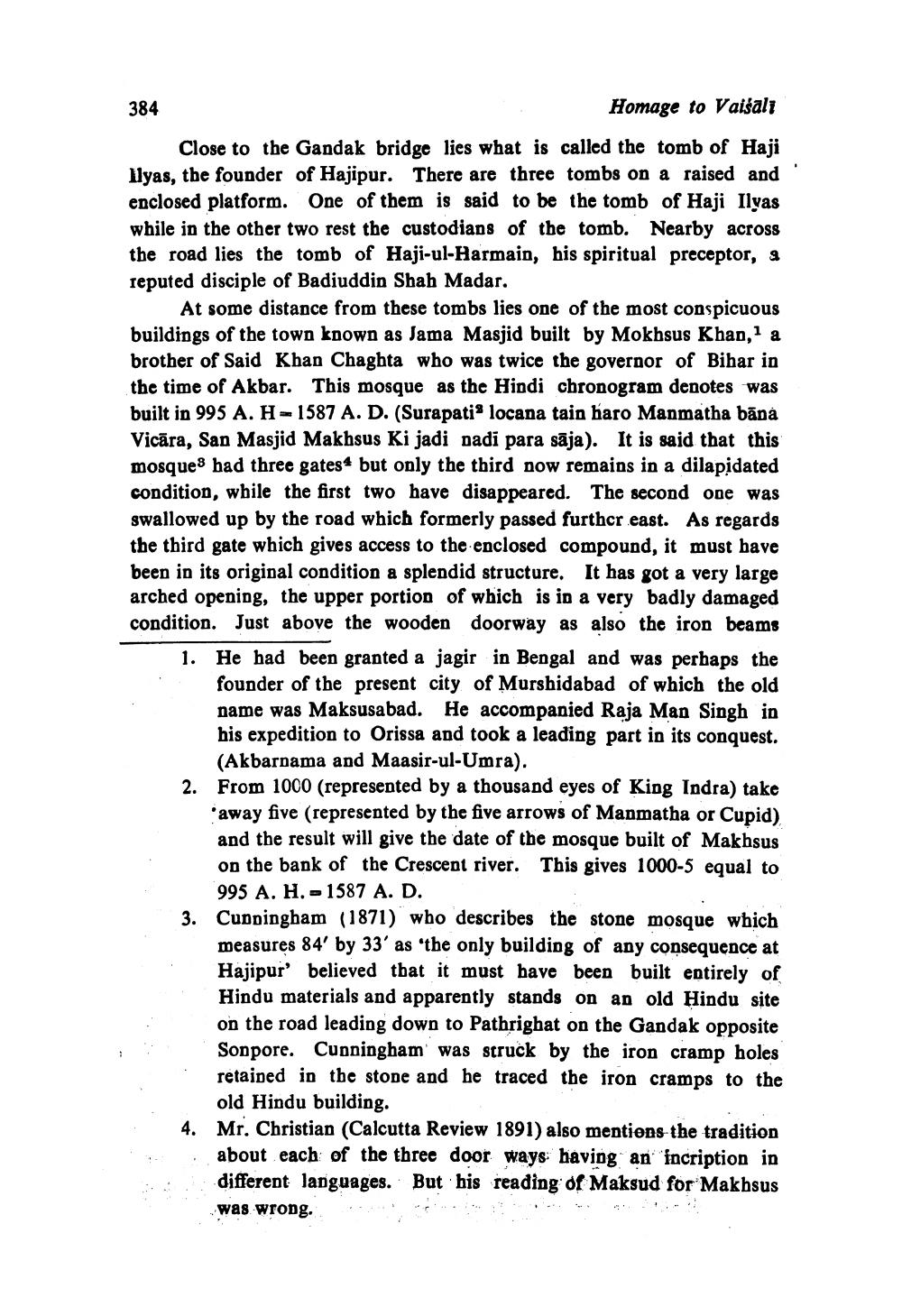________________ 384 Homage to Vaisali Close to the Gandak bridge lies what is called the tomb of Haji Ilyas, the founder of Hajipur. There are three tombs on a raised and enclosed platform. One of them is said to be the tomb of Haji Ilyas while in the other two rest the custodians of the tomb. Nearby across the road lies the tomb of Haji-ul-Harmain, his spiritual preceptor, a reputed disciple of Badiuddin Shah Madar. At some distance from these tombs lies one of the most conspicuous buildings of the town known as Jama Masjid built by Mokbsus Khan, a brother of Said Khan Chaghta who was twice the governor of Bihar in the time of Akbar. This mosque as the Hindi chronogram denotes was built in 995 A. H= 1587 A. D. (Surapati locana tain haro Manmatha bana Vicara, San Masjid Makhsus Ki jadi padi para saja). It is said that this mosques had three gates but only the third now remains in a dilapidated condition, wbile the first two have disappeared. The second one was swallowed up by the road which formerly passed further east. As regards the third gate which gives access to the enclosed compound, it must bave been in its original condition a splendid structure. It has got a very large arched opening, the upper portion of which is in a very badly damaged condition. Just above the wooden doorway as also the iron beams 1. He had been granted a jagir in Bengal and was perhaps the founder of the present city of Murshidabad of which the old name was Maksusabad. He accompanied Raja Man Singh in his expedition to Orissa and took a leading part in its conquest. (Akbarpama and Maasir-ul-Umra). From 1000 (represented by a thousand eyes of King Indra) take away five (represented by the five arrows of Manmatha or Cupid) and the result will give the date of the mosque built of Makhsus on the bank of the Crescent river. This gives 1000-5 equal to 995 A. H. - 1587 A. D. 3. Cuppingham (1871) who describes the stone mosque which measures 84' by 33' as 'the only building of any consequence at Hajipur' believed that it must have been built entirely of Hindu materials and apparently stands on an old Hindu site on the road leading down to Pathrighat on the Gandak opposite Sonpore. Cunningham was struck by the iron cramp holes retained in the stone and he traced the iron cramps to the old Hindu building. 4. Mr. Christian (Calcutta Review 1891) also mentions the tradition about each of the three door ways having an incription in different languages. But his reading of Maksud for Makhsus was wrong. . . ! ! 2.




